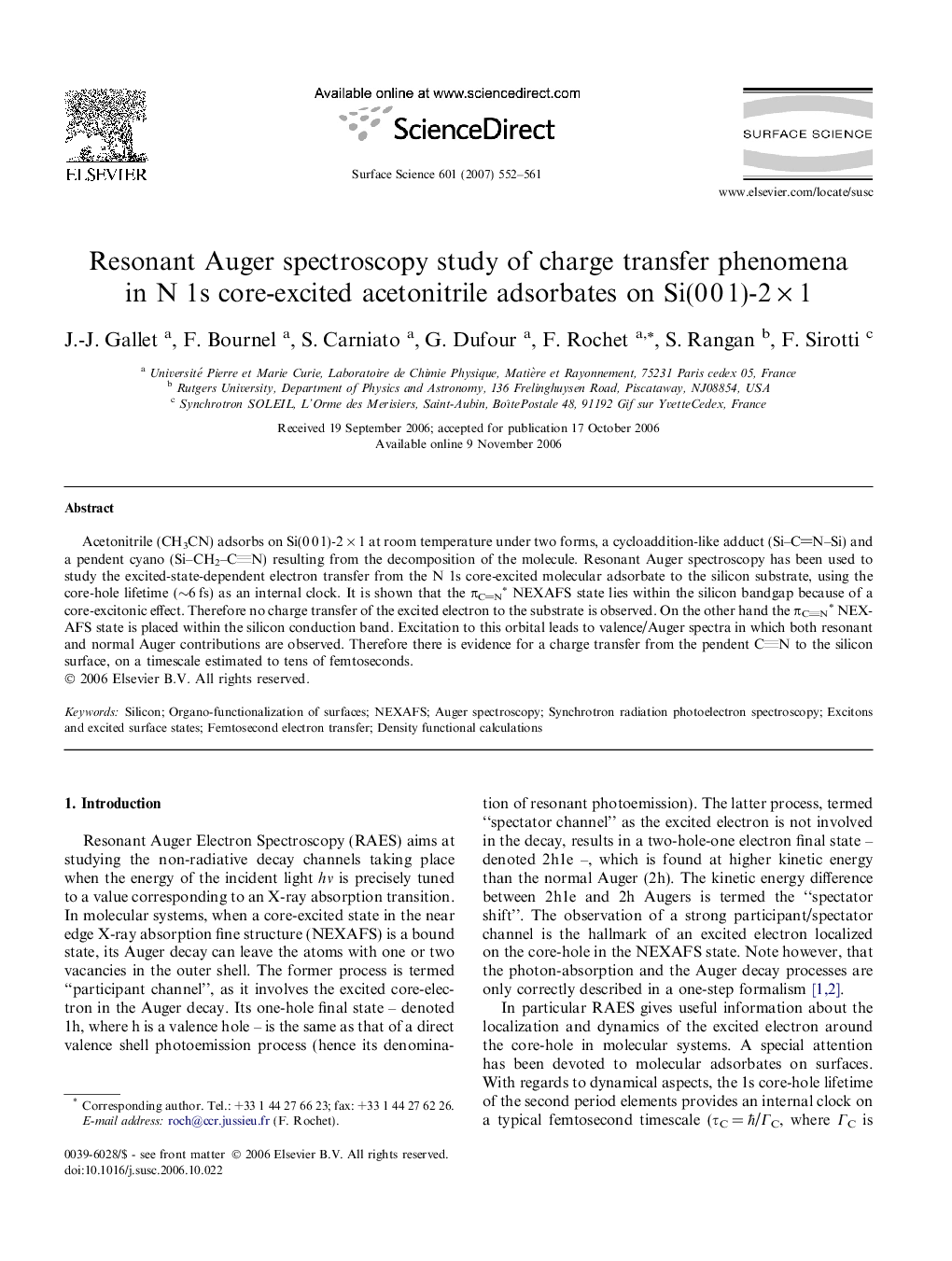| Article ID | Journal | Published Year | Pages | File Type |
|---|---|---|---|---|
| 5426166 | Surface Science | 2007 | 10 Pages |
Acetonitrile (CH3CN) adsorbs on Si(0Â 0Â 1)-2Â ÃÂ 1 at room temperature under two forms, a cycloaddition-like adduct (Si-CN-Si) and a pendent cyano (Si-CH2-CN) resulting from the decomposition of the molecule. Resonant Auger spectroscopy has been used to study the excited-state-dependent electron transfer from the N 1s core-excited molecular adsorbate to the silicon substrate, using the core-hole lifetime (â¼6Â fs) as an internal clock. It is shown that the ÏCNâ NEXAFS state lies within the silicon bandgap because of a core-excitonic effect. Therefore no charge transfer of the excited electron to the substrate is observed. On the other hand the ÏCNâ NEXAFS state is placed within the silicon conduction band. Excitation to this orbital leads to valence/Auger spectra in which both resonant and normal Auger contributions are observed. Therefore there is evidence for a charge transfer from the pendent CN to the silicon surface, on a timescale estimated to tens of femtoseconds.
